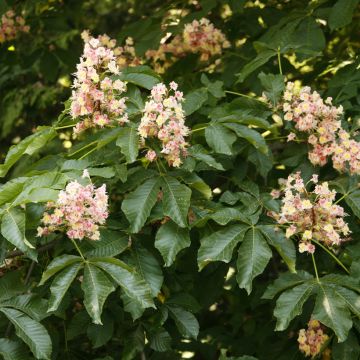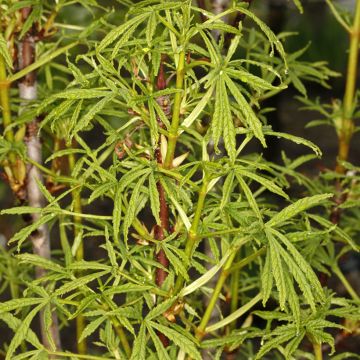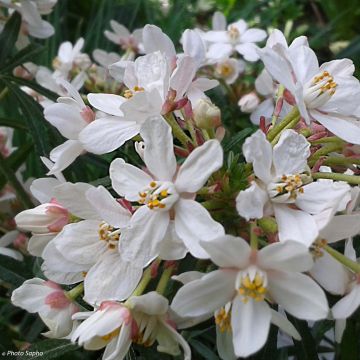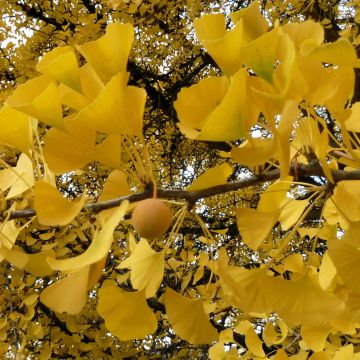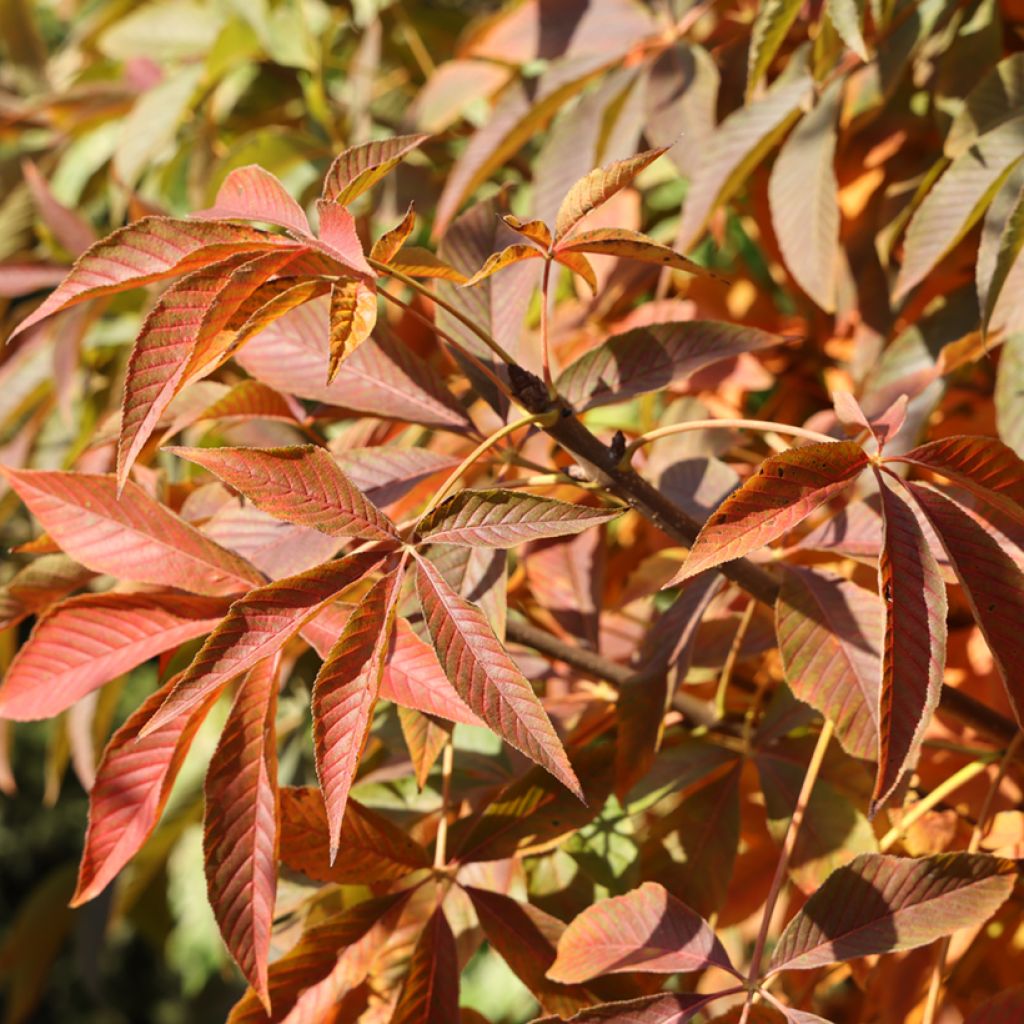

Aesculus glabra Herkenrode - Ohio buckeye
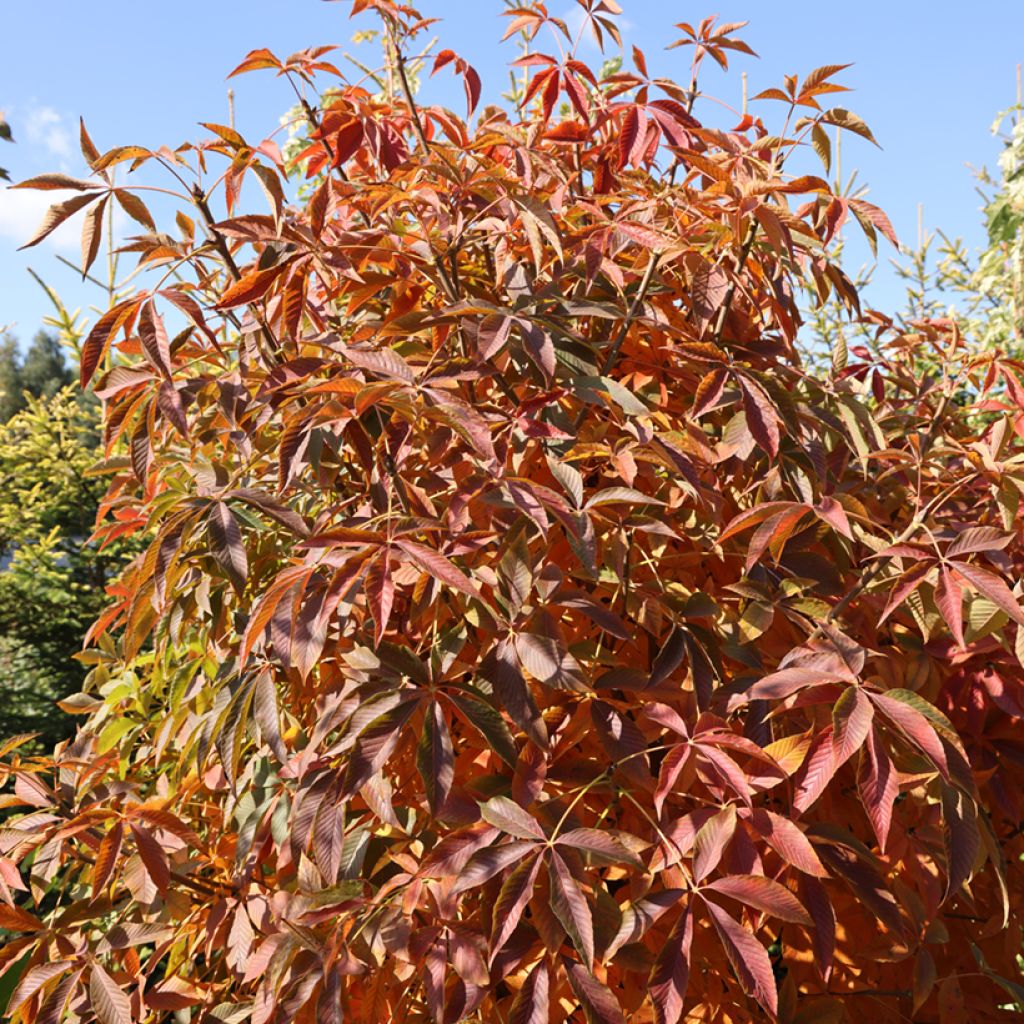

Aesculus glabra Herkenrode - Ohio buckeye
Aesculus glabra Herkenrode - Ohio buckeye
Aesculus glabra Herkenrode
Ohio buckeye, Fetid buckeye
This item cannot be shipped to the selected country
Oversize package delivery charge from €6.90
More information
Schedule delivery date,
and select date in basket
This plant carries a 24 months recovery warranty
More information
We guarantee the quality of our plants for a full growing cycle, and will replace at our expense any plant that fails to recover under normal climatic and planting conditions.
Oversize package: home delivery by special carrier from €6.90 per order..
Express home delivery from €8.90.
Does this plant fit my garden?
Set up your Plantfit profile →
Description
Aesculus glabra 'Herkenrode' is a variety of Ohio buckeye tree that is interesting for its moderate growth and vibrant autumn colours. This deciduous tree has a short trunk and a naturally rounded crown, well-branched and regular, even without pruning. It also offers a honey-scented spring flowering in shades of yellow, white, and green. Its elegant foliage, finer than that of the chestnut tree, turns reddish-orange from early September. This accommodating buckeye tree will be even more beautiful in the sun and planted in slightly moist humus-bearing soil.
Aesculus glabra 'Herkenrode' is a horticultural selection by Joke Osselaer, Arboretum Wespelaar, registered in Belgium in 2019. It is a seedling obtained in 1994 at the Arboretum Waasland, also in Belgium. Like all buckeye trees, this variety belongs to the Sapindaceae family. It is a relatively slow-growing tree with a rounded habit, reaching about 7 m in all directions at the age of 30. Its leaves measure 16 to 28 cm long and 15 to 20 cm wide, attached to the branches by hairy petioles measuring 7.5 to 15 cm in length. Each leaf is composed of 5 to 6 leaflets measuring 7 to 13 cm long and 2.5 to 4 cm wide. The underside of the leaves is hairy along the veins. The foliage is green from spring until August then changes colour from early September. It displays a mix of cherry red to redcurrant and orange-yellow to orange. These colours can be enjoyed throughout the month before they fall to the ground. The sparse flowers, appear from late April to mid-May depending on the climate. They are yellow-green to chartreuse yellow and white-yellow, carried in upright, cylindrical panicles. Each flower has 4 petals with protruding stamens. The fruits measure up to 3 cm in diameter, they are broadly ovoid and unevenly covered with spines. At maturity, they often have a pinkish hue on a green-yellow base. The trunk bark is rough and fissured when mature.
Aesculus glabra 'Herkenrode' tolerates cold (at least -15°C), rainy or relatively dry and hot summers. Its beautiful autumn colours come back consistently every year, and its naturally rounded branches are interesting even in winter. Its compact size makes it suitable for medium to small gardens. It can be used as a specimen shade tree, or in a grove with other small trees. To accompany it, choose shrubs with remarkable foliage such as Cotinus 'Royal Purple', a Japanese maple 'Atropurpureum', a purple hazelnut, or a European spindle tree 'Red Cascade' for example.
Report an error about the product description
Plant habit
Flowering
Foliage
Botanical data
Aesculus
glabra
Herkenrode
Sapindaceae
Ohio buckeye, Fetid buckeye
Cultivar or hybrid
Other Aesculus - Horse Chestnut
Planting and care
Aesculus glabra 'Herkenrode' should be planted in spring or autumn in deep, preferably humus-bearing and moist soil, in a sunny location. It develops a deep taproot that allows it to tolerate some drought once mature. Some sources indicate that its foliage is more colourful during slightly dry years. Deep digging is recommended before planting. Provide it with enough space, as it can reach a width of 4-5 m. Water and mulch to maintain soil moisture. Feed in spring. Prune in February, removing dead branches if necessary. It can be susceptible to attacks from Maybugs, scale insects, and diseases such as canker or foliar spots.
Planting period
Intended location
Care
This item has not been reviewed yet - be the first to leave a review about it.
Striking foliage shrubs
Haven't found what you were looking for?
Hardiness is the lowest winter temperature a plant can endure without suffering serious damage or even dying. However, hardiness is affected by location (a sheltered area, such as a patio), protection (winter cover) and soil type (hardiness is improved by well-drained soil).

Photo Sharing Terms & Conditions
In order to encourage gardeners to interact and share their experiences, Promesse de fleurs offers various media enabling content to be uploaded onto its Site - in particular via the ‘Photo sharing’ module.
The User agrees to refrain from:
- Posting any content that is illegal, prejudicial, insulting, racist, inciteful to hatred, revisionist, contrary to public decency, that infringes on privacy or on the privacy rights of third parties, in particular the publicity rights of persons and goods, intellectual property rights, or the right to privacy.
- Submitting content on behalf of a third party;
- Impersonate the identity of a third party and/or publish any personal information about a third party;
In general, the User undertakes to refrain from any unethical behaviour.
All Content (in particular text, comments, files, images, photos, videos, creative works, etc.), which may be subject to property or intellectual property rights, image or other private rights, shall remain the property of the User, subject to the limited rights granted by the terms of the licence granted by Promesse de fleurs as stated below. Users are at liberty to publish or not to publish such Content on the Site, notably via the ‘Photo Sharing’ facility, and accept that this Content shall be made public and freely accessible, notably on the Internet.
Users further acknowledge, undertake to have ,and guarantee that they hold all necessary rights and permissions to publish such material on the Site, in particular with regard to the legislation in force pertaining to any privacy, property, intellectual property, image, or contractual rights, or rights of any other nature. By publishing such Content on the Site, Users acknowledge accepting full liability as publishers of the Content within the meaning of the law, and grant Promesse de fleurs, free of charge, an inclusive, worldwide licence for the said Content for the entire duration of its publication, including all reproduction, representation, up/downloading, displaying, performing, transmission, and storage rights.
Users also grant permission for their name to be linked to the Content and accept that this link may not always be made available.
By engaging in posting material, Users consent to their Content becoming automatically accessible on the Internet, in particular on other sites and/or blogs and/or web pages of the Promesse de fleurs site, including in particular social pages and the Promesse de fleurs catalogue.
Users may secure the removal of entrusted content free of charge by issuing a simple request via our contact form.
The flowering period indicated on our website applies to countries and regions located in USDA zone 8 (France, the United Kingdom, Ireland, the Netherlands, etc.)
It will vary according to where you live:
- In zones 9 to 10 (Italy, Spain, Greece, etc.), flowering will occur about 2 to 4 weeks earlier.
- In zones 6 to 7 (Germany, Poland, Slovenia, and lower mountainous regions), flowering will be delayed by 2 to 3 weeks.
- In zone 5 (Central Europe, Scandinavia), blooming will be delayed by 3 to 5 weeks.
In temperate climates, pruning of spring-flowering shrubs (forsythia, spireas, etc.) should be done just after flowering.
Pruning of summer-flowering shrubs (Indian Lilac, Perovskia, etc.) can be done in winter or spring.
In cold regions as well as with frost-sensitive plants, avoid pruning too early when severe frosts may still occur.
The planting period indicated on our website applies to countries and regions located in USDA zone 8 (France, United Kingdom, Ireland, Netherlands).
It will vary according to where you live:
- In Mediterranean zones (Marseille, Madrid, Milan, etc.), autumn and winter are the best planting periods.
- In continental zones (Strasbourg, Munich, Vienna, etc.), delay planting by 2 to 3 weeks in spring and bring it forward by 2 to 4 weeks in autumn.
- In mountainous regions (the Alps, Pyrenees, Carpathians, etc.), it is best to plant in late spring (May-June) or late summer (August-September).
The harvesting period indicated on our website applies to countries and regions in USDA zone 8 (France, England, Ireland, the Netherlands).
In colder areas (Scandinavia, Poland, Austria...) fruit and vegetable harvests are likely to be delayed by 3-4 weeks.
In warmer areas (Italy, Spain, Greece, etc.), harvesting will probably take place earlier, depending on weather conditions.
The sowing periods indicated on our website apply to countries and regions within USDA Zone 8 (France, UK, Ireland, Netherlands).
In colder areas (Scandinavia, Poland, Austria...), delay any outdoor sowing by 3-4 weeks, or sow under glass.
In warmer climes (Italy, Spain, Greece, etc.), bring outdoor sowing forward by a few weeks.




































